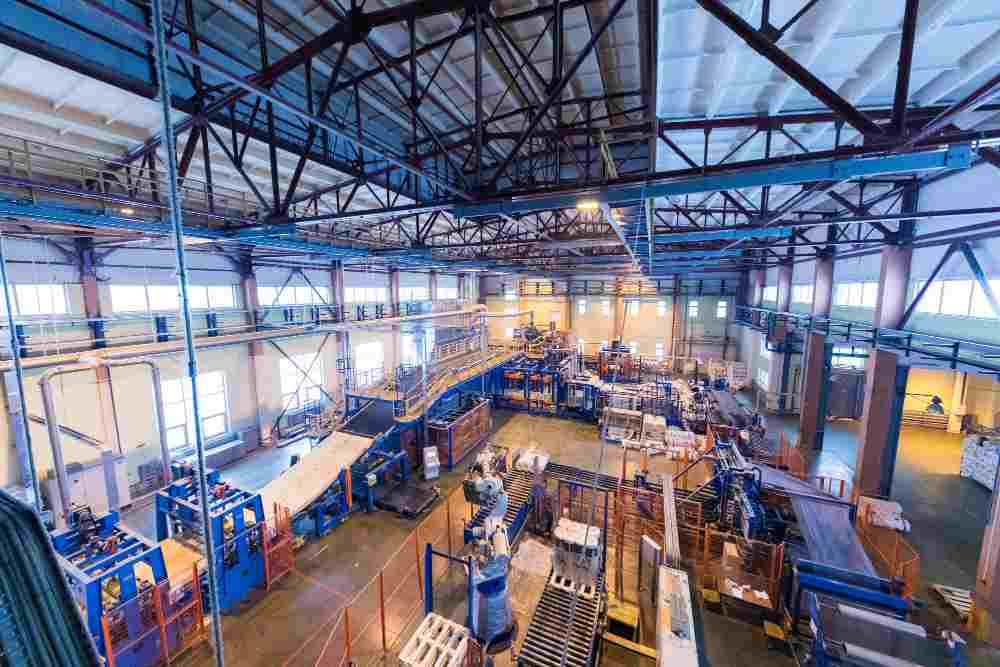Malaysia’s industrial landscape is a vibrant mix of light, medium, and heavy industries, each contributing uniquely to the nation’s economy in 2025. These sectors differ in scale, capital investment, environmental impact, and regulatory requirements, yet collectively drive Malaysia’s GDP (projected at RM587.5 billion by 2030 under the New Industrial Master Plan 2030) and employment (over 1.5 million jobs). By comparing light, medium, and heavy industries examples in Malaysia, businesses and investors can understand their operational models, economic contributions, and compliance needs. This article examines key examples across these categories, highlighting their differences and synergies, and includes five frequently asked questions to address common queries.
Defining Light, Medium, and Heavy Industries
- Light Industry: Characterized by low capital investment (RM200,000–RM5 million), smaller-scale operations, and minimal environmental impact, light industries produce consumer goods like electronics or textiles. They require small buffer zones (50–100 meters) and are regulated by the Malaysian Investment Development Authority (MIDA) and Department of Environment (DOE).
- Medium Industry: These industries bridge light and heavy sectors, with moderate capital needs (RM5–RM50 million) and environmental impact. They produce intermediate goods or semi-finished products, such as automotive parts or processed chemicals, often requiring 100–300-meter buffer zones.
- Heavy Industry: Capital-intensive (RM50 million–RM1 billion+), heavy industries produce raw materials or capital goods like steel or petrochemicals, with significant environmental impact and large buffer zones (300–500 meters), governed by stringent DOE regulations under the Environmental Quality Act 1974.
Light Industry Example: Electronics and Semiconductors (Intel Malaysia)
Overview: Malaysia’s electronics and electrical (E&E) industry, led by Intel in Penang’s Bayan Lepas Free Industrial Zone, is a flagship light industry producing semiconductors and consumer electronics.
Operations: Intel’s facilities use cleanroom environments for assembling microchips, with setup costs of RM1–RM5 million for medium-scale plants. Operations are labor-intensive, employing 10,000+ skilled technicians, and require minimal heavy machinery. Compliance with Malaysian Standards (MS) ensures product quality.
Economic Impact: The E&E sector contributes over 40% of Malaysia’s exports (RM600 billion annually), supporting 600,000 jobs. Intel’s Penang plant produces chips for global tech markets, leveraging RCEP trade agreements.
Regulatory Requirements: Requires SSM registration (RM1,000–RM3,000 for Sdn. Bhd.), DOE permits for waste (RM1,000–RM5,000), and MIDA approval for tax exemptions (60–70% for five years). Buffer zones of 50–100 meters suffice due to low emissions.
Key Characteristics: Low environmental impact, urban-friendly, and export-focused, with moderate energy use (RM0.20–RM0.40 per kWh).
Medium Industry Example: Automotive Parts Manufacturing (Proton Holdings)
Overview: Proton Holdings, a national automaker, produces automotive parts like engines and chassis in Shah Alam, Selangor, representing Malaysia’s medium industry sector.
Operations: Proton’s plants use automated assembly lines and CNC machines, with setup costs of RM10–RM50 million. Operations balance labor (5,000+ workers) and machinery, producing components for domestic and ASEAN markets. Compliance with ISO 9001 and DOE’s Environmental Quality (Clean Air) Regulation 1978 ensures quality and environmental standards.
Economic Impact: The automotive sector contributes RM20 billion to exports and employs 50,000 workers, supporting Malaysia’s automotive supply chain. Proton’s collaboration with Geely enhances technology transfers.
Regulatory Requirements: Requires MIDA’s Manufacturing Licence (for firms with RM2.5 million+ in funds or 75+ employees), DOE permits for emissions and effluents (RM5,000–RM20,000), and local authority permits (RM1,000–RM10,000). Buffer zones of 100–300 meters are needed due to moderate emissions.
Key Characteristics: Moderate capital and environmental impact, semi-urban locations, and a mix of labor and automation.
Heavy Industry Example: Petrochemicals (PETRONAS Chemicals)
Overview: PETRONAS Chemicals, operating in Gebeng, Kuantan, is a leading heavy industry player, producing olefins, polymers, and fertilizers.
Operations: Gebeng’s refineries process crude oil and natural gas, using capital-intensive equipment (setup: RM100 million–RM1 billion). Operations require advanced pollution control systems (RM10–RM50 million for effluent treatment) and employ 10,000+ workers. Compliance with Environmental Quality (Sewage and Industrial Effluent) Regulation 1979 is critical.
Economic Impact: The petrochemical sector generates RM50 billion+ in exports and attracts RM5.7 billion in FDI annually, supporting 40,000 jobs and downstream industries like plastics.
Regulatory Requirements: Mandates comprehensive EIAs (RM20,000–RM100,000), DOE permits for emissions and waste (RM5,000–RM20,000), and CIDB registration for construction (RM500–RM2,000). Large buffer zones (300–500 meters) are required due to high emissions.
Key Characteristics: High capital investment, significant environmental impact, and rural or industrial zone locations.
Comparing Light, Medium, and Heavy Industries
1. Capital Investment
- Light (Intel): RM1–RM5 million for a semiconductor plant, affordable for SMEs and supported by MIDA tax exemptions.
- Medium (Proton): RM10–RM50 million, requiring significant but manageable investment for component manufacturing.
- Heavy (PETRONAS): RM100 million–RM1 billion+, suited for large corporations due to high machinery and infrastructure costs.
2. Environmental Impact
- Light: Minimal, with small buffer zones (50–100 meters) and low emissions, requiring basic DOE permits (RM1,000–RM5,000).
- Medium: Moderate, with 100–300-meter buffer zones and stricter emission controls (RM5,000–RM20,000 for permits).
- Heavy: High, needing 300–500-meter buffer zones, comprehensive EIAs, and advanced pollution systems (RM10–RM50 million).
3. Workforce and Operations
- Light: Labor-intensive (e.g., 10,000+ workers at Intel), with minimal heavy machinery and urban-friendly operations.
- Medium: Balanced labor and automation (e.g., 5,000 workers at Proton), using CNC machines and assembly lines.
- Heavy: Machinery-intensive, with fewer but specialized workers (e.g., 10,000 at PETRONAS) and complex refineries.
4. Economic Contribution
- Light: High export value (RM600 billion for E&E), supporting global supply chains and 600,000 jobs.
- Medium: Moderate exports (RM20 billion for automotive), with 50,000 jobs and local supply chain support.
- Heavy: Significant FDI (RM5.7 billion for petrochemicals) and 40,000 jobs, driving raw material production.
5. Regulatory Complexity
- Light: Simpler compliance with SSM, MIDA, and basic DOE permits, with lower fines (RM1,000–RM10,000 for non-compliance).
- Medium: Moderate complexity, requiring MIDA licences, DOE permits, and local authority approvals.
- Heavy: Complex, with EIAs, stringent DOE regulations, and CIDB compliance, risking fines of RM10,000–RM100,000.
Synergies and Opportunities
- Supply Chain Integration: Light industries (e.g., electronics) rely on heavy industries (e.g., petrochemicals for plastics), while medium industries (e.g., automotive parts) bridge the two.
- Investment Opportunities: Investors can target light industries for lower entry costs, medium industries for balanced growth, or heavy industries for high-impact ventures.
- Government Support: MIDA’s incentives (60–70% tax relief) and NIMP 2030 support all sectors, with industrial zones like Shah Alam and Gebeng facilitating operations.
Challenges
- Light: Rising labor costs (RM2,000–RM4,000 monthly per worker) and global competition.
- Medium: Technology adoption costs and reliance on imported components.
- Heavy: High energy costs (RM0.40–RM0.60 per kWh) and environmental compliance expenses.
FAQs
- What differentiates light, medium, and heavy industries in Malaysia?
Light industries (e.g., Intel) have low capital (RM1–RM5 million) and environmental impact, medium industries (e.g., Proton) have moderate investment (RM10–RM50 million), and heavy industries (e.g., PETRONAS) require high capital (RM100 million+) and large buffer zones (300–500 meters). - How does Intel’s electronics industry compare to PETRONAS’ petrochemicals?
Intel’s light industry focuses on consumer electronics with minimal emissions and urban locations, while PETRONAS’ heavy industry produces raw materials, requiring significant investment and stringent DOE compliance (EIAs: RM20,000–RM100,000). - Why is Proton’s automotive sector considered a medium industry?
Proton’s RM10–RM50 million setups and balanced labor-automation model bridge light and heavy industries, producing components with moderate environmental impact and 100–300-meter buffer zones. - What are the economic contributions of these industries?
Light industries (RM600 billion exports), medium industries (RM20 billion), and heavy industries (RM50 billion) drive GDP, with light employing 600,000, medium 50,000, and heavy 40,000 workers. - What regulations apply to these industries?
All require SSM registration (RM1,000–RM3,000); light needs basic DOE permits (RM1,000–RM5,000), medium requires MIDA licences, and heavy mandates EIAs and CIDB compliance (RM5,000–RM100,000).
Conclusion
Malaysia’s light (Intel), medium (Proton), and heavy (PETRONAS) industries showcase diverse operational models, from low-cost electronics to capital-intensive petrochemicals. By comparing their capital needs, environmental impacts, and economic contributions, investors can identify opportunities suited to their goals. Supported by MIDA incentives, robust infrastructure, and trade agreements, these industries drive Malaysia’s economic growth in 2025, offering lessons in scalability, compliance, and market adaptability for sustainable success.


Leave a Reply